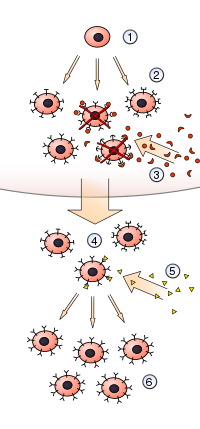
Photo from wikipedia
A decision support process is presented to accommodate selecting and scaling of earthquake motions as required for the time domain analysis of structures. Code-compatible suites of seismic motions are provided… Click to show full abstract
A decision support process is presented to accommodate selecting and scaling of earthquake motions as required for the time domain analysis of structures. Code-compatible suites of seismic motions are provided being, at the same time, prequalified through a multi-criterion approach to induce response parameters with reduced variability. The latter is imperative to increase the reliability of the average response values, normally required for the code-prescribed design verification of structures. Structural attributes like the dynamic characteristics as well as criteria related to variability of seismic motions and their compliance with a target spectrum are quantified through a newly introduced index, δsv–sc, which aims to prioritize motions suites for response history analysis. To demonstrate the applicability of the procedure presented, the structural model of a multi-story building was subjected to numerous suites of motions that were highly ranked according to both the proposed approach (δsv–sc) and the conventional one (δconv), that is commonly used for earthquake records selection and scaling. The findings from numerous linear response history analyses reveal the superiority of the proposed multi-criterion approach, as it extensively reduces the intra-suite structural response variability and consequently, increases the reliability of the design values. The relation between the target reliability in assessing structural response and the size of the suite of motions selected was also investigated, further demonstrating the efficiency of the proposed selection procedure to achieve higher response reliability levels with smaller samples of ground motion.
Journal Title: Bulletin of Earthquake Engineering
Year Published: 2017
Link to full text (if available)
Share on Social Media: Sign Up to like & get
recommendations!